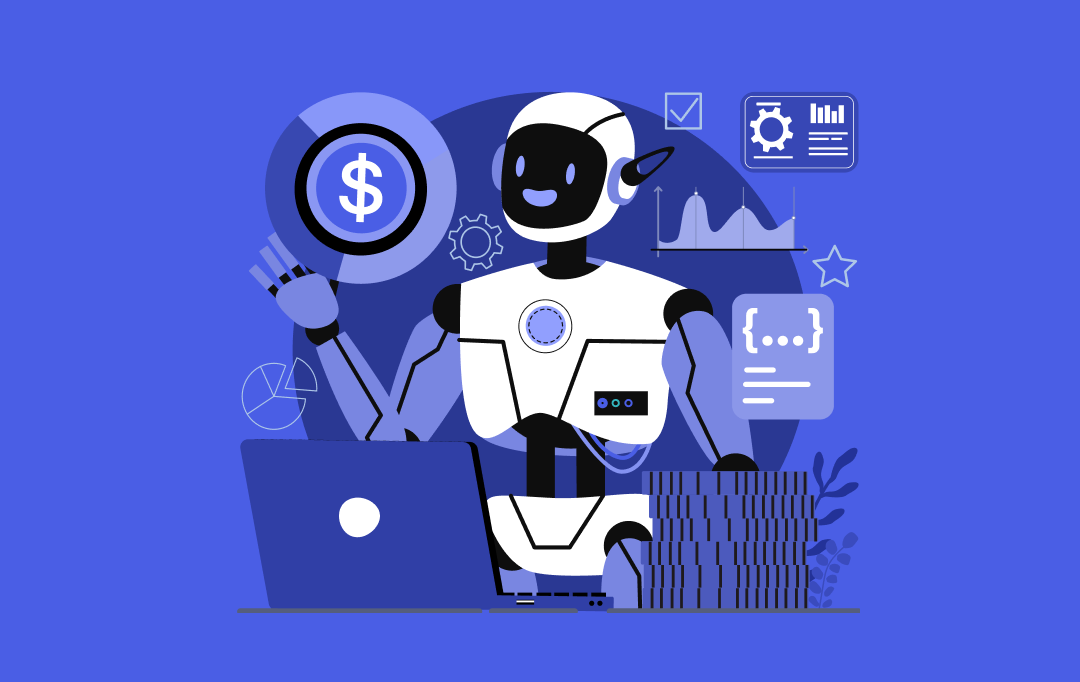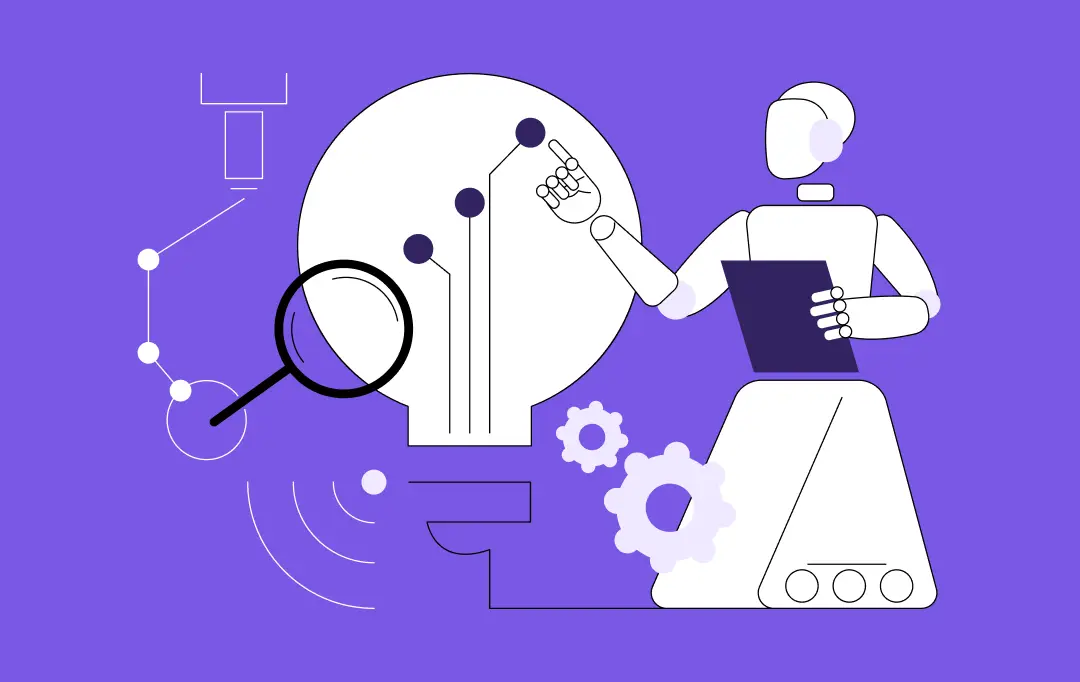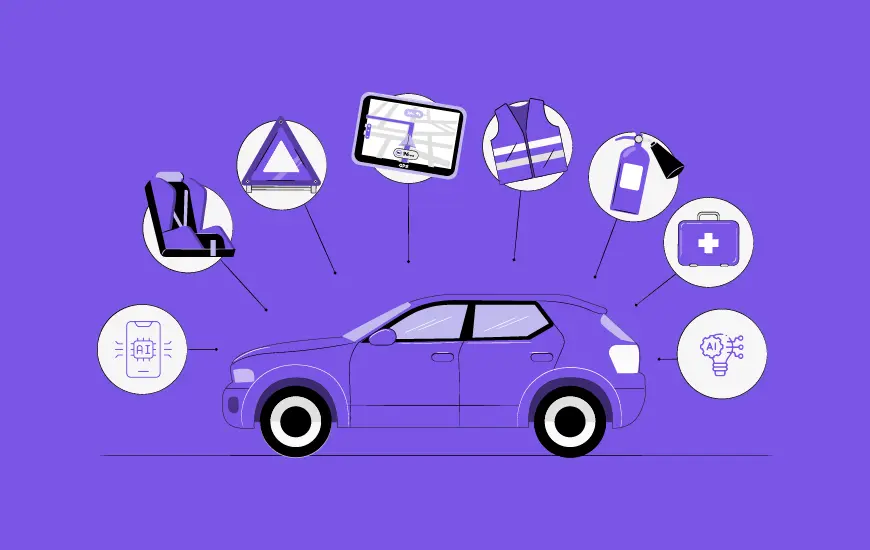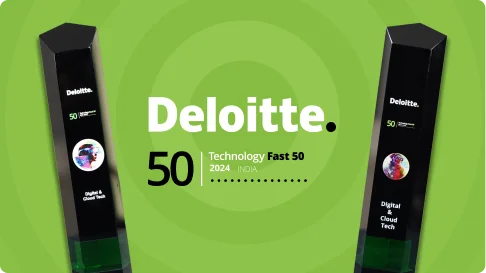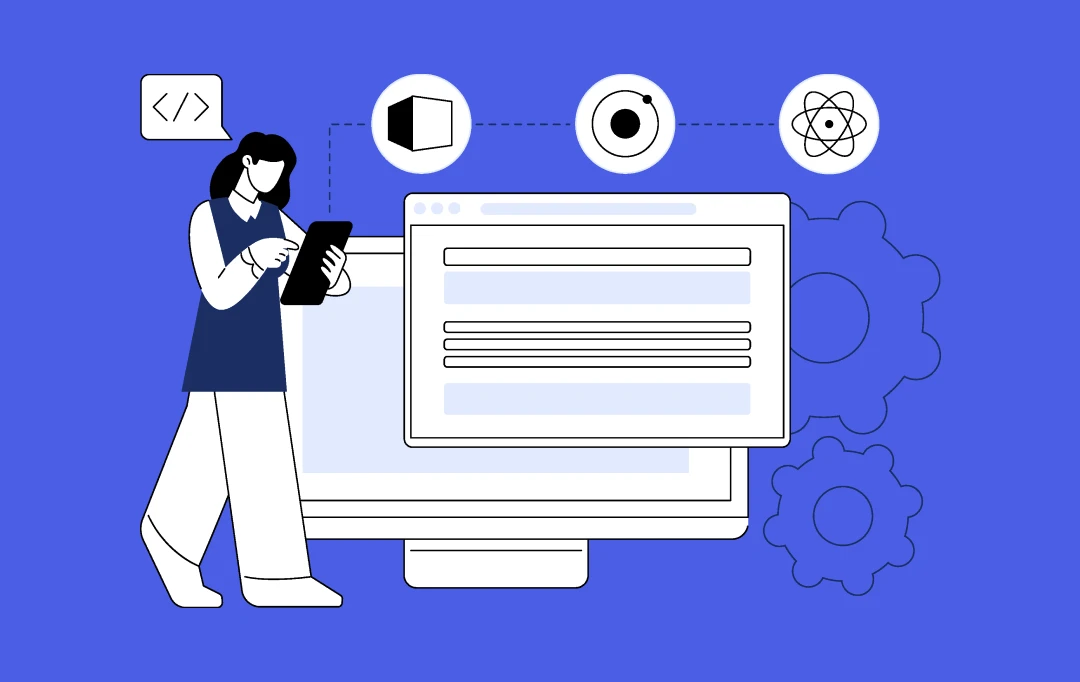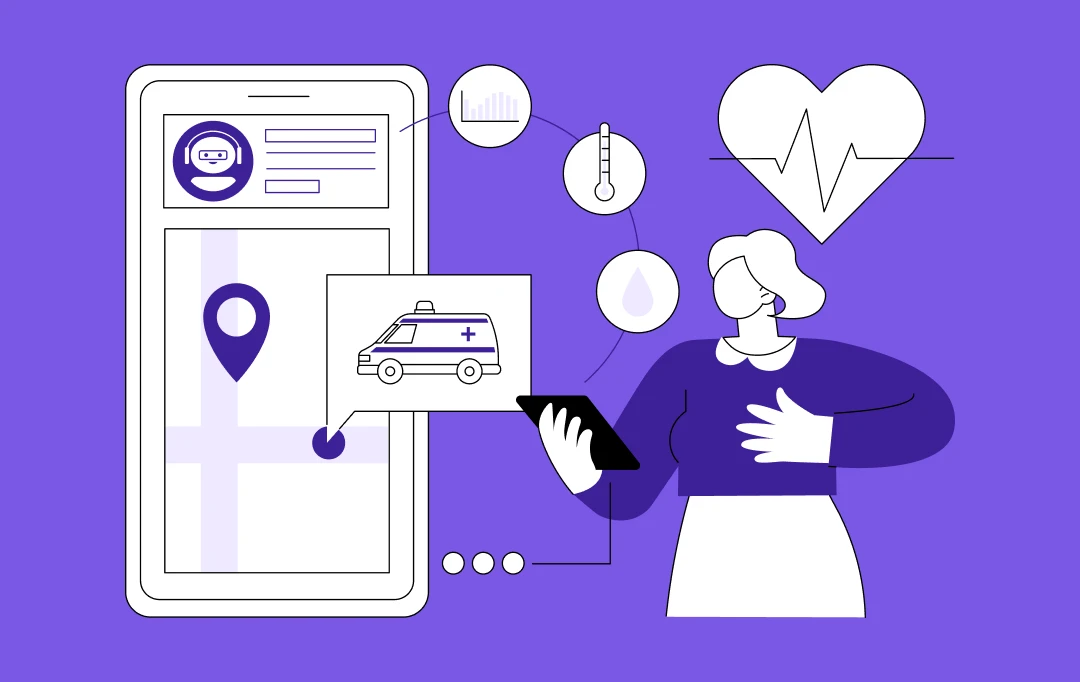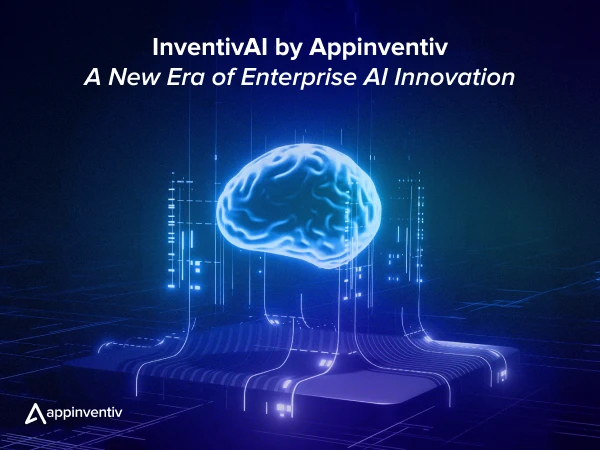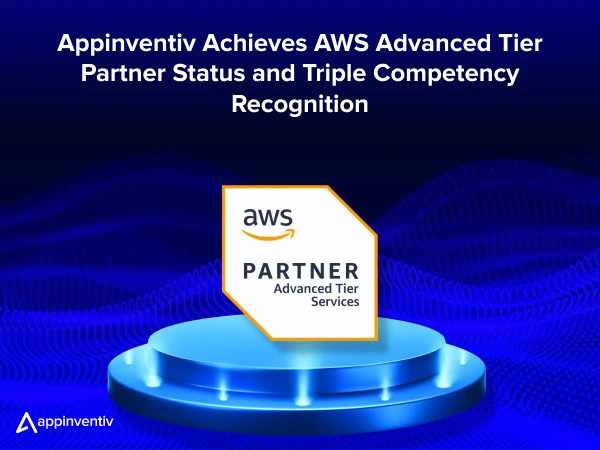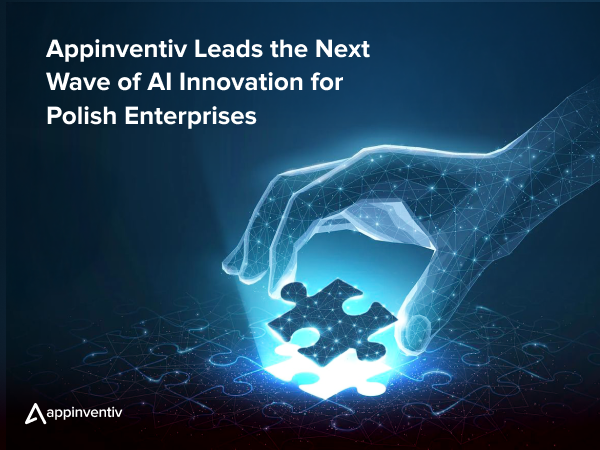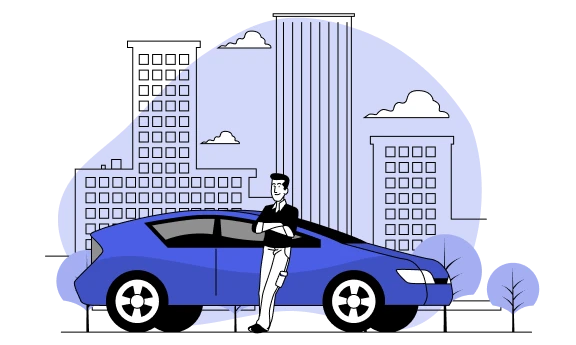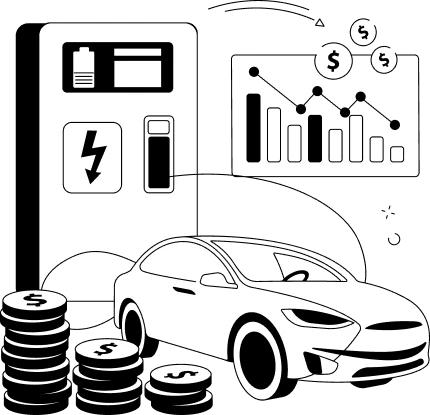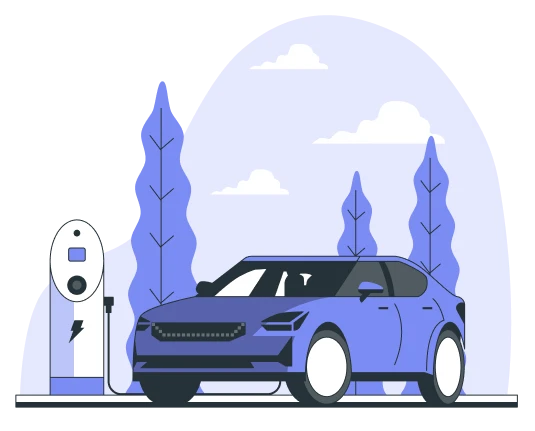- A Brief Glimpse into Tesla Autopilot: An Innovation Beyond Driving
- Understanding the Cost to Build a Driver Assistance System like Tesla Autopilot
- Budgeting for Success: Cost Breakdown Across ADAS Development Stages
- Key Factors Influencing the Cost to Build a Tesla Autopilot-Like ADAS System
- Feature Complexity
- Sensor Integration
- AI and Machine Learning Infrastructure
- Safety, Compliance, and Regulations
- Real-Time Processing and Edge AI
- Cross-Vehicle Compatibility
- Data Security and OTA Updates
- Proven Strategies to Minimize Development Costs for an ADAS Like Tesla Autopilot
- Use Modular Architecture
- Leverage Open-Source AI Models and Toolkits
- Automate Testing and Simulation
- Iterate Based on Driving Data
- Essential Features of an AI Agent Like Tesla Autopilot
- Elevating the ADAS Experience with Advanced Features
- Developing an ADAS System Like Tesla Autopilot: A Step-by-Step Guide
- Define Features and Requirements
- Choose the Right Technology Stack
- UI/UX Design
- System Development
- Testing and Quality Assurance
- Launch
- Feedback and Iteration
- Maintenance and Updates
- How Does an AI Agent Like Tesla Autopilot Make Money?
- Subscription Plans
- Tiered Packages
- Fleet and Commercial Licensing
- Insurance Integration
- Why Appinventiv is the Right Choice for Building Your ADAS System
- FAQs
You must know that thousands of lives are lost to human error behind the wheel every year. Whether the reason is distraction, fatigue, or just delayed reaction time, these small lapses lead to big consequences.
For automotive leaders and mobility innovators, this fact is no longer just a statistic but a call to dive into smart software that can see, think, and act faster than humans. This is where an advanced driver assistance system (ADAS) comes to your aid. These systems unknowingly become strategic differentiators that save lives, cut liability, and elevate brand trust. How?
Now, Tesla Autopilot didn’t just enter this space but dominated it. By combining real-time computer vision, sensor fusion, and predictive intelligence, Tesla has set the benchmark for what’s possible when software becomes the co-pilot. From automated lane changing and adaptive cruise control to the self-parking option, Autopilot is an AI agent that has unlocked automotive digital transformation, raised customer expectations, and forced the entire industry to rethink what smart driving is.
Businesses like yours must know that if they are not yet diving into the world of autonomy, they are falling behind their competitors. Offering your audience a brand promise that revolves around a complete ecosystem of Autopilot is no longer a choice but a necessity.
Whether you are a startup aiming to disrupt or an established enterprise aiming to stand apart, you must give your users something equally intelligent, reliable, and scalable. As you evaluate your product roadmap, the question looming behind the surface is,
“How much does it cost to build a driver assistance system like Tesla Autopilot”?
To give you a brief answer, the overall cost to build an AI agent like Tesla Autopilot usually varies from $40,000 to $300,000. The final price can be affected by several factors, including integrating multi-camera neural networks, over-the-air updates, large-scale data infrastructure, and more.
To say the least, the overall complexity of the software is the final deciding factor that can help you estimate the budget. In this blog, we will help you uncover that complexity and how to deal with it. If your team plans to enter this space, this is the blueprint you need before you hit the road. Let’s start from the beginning.
Got a killer idea for the $300–$400B ADAS market by 2035? Our crew will morph your vision into a hardcore driver-assistance beast.
A Brief Glimpse into Tesla Autopilot: An Innovation Beyond Driving
Tesla’s Autopilot is a transformative leap in automotive technology designed to assist drivers with steering, accelerating, and braking tasks. The ADAS tool leverages a combination of cameras, sensors, and advanced machine learning algorithms to enhance safety and convenience, reducing the burden on drivers during long journeys and in heavy traffic.
Tesla’s AI-powered self-driving system goes beyond basic driving assistance. It allows the car to change lanes automatically, navigate highways, and recognize traffic signals and stop signs. These features are designed to reduce the driver’s workload and enhance safety, moving towards a future where vehicles can manage complex driving situations with minimal human input.
- According to Tesla’s reports for Q1 2025, one crash occurred for every 7.44 million miles driven with Autopilot engaged, compared to one crash every 1.51 million miles without it. This simply suggests that Autopilot-equipped vehicles experience significantly fewer accidents.
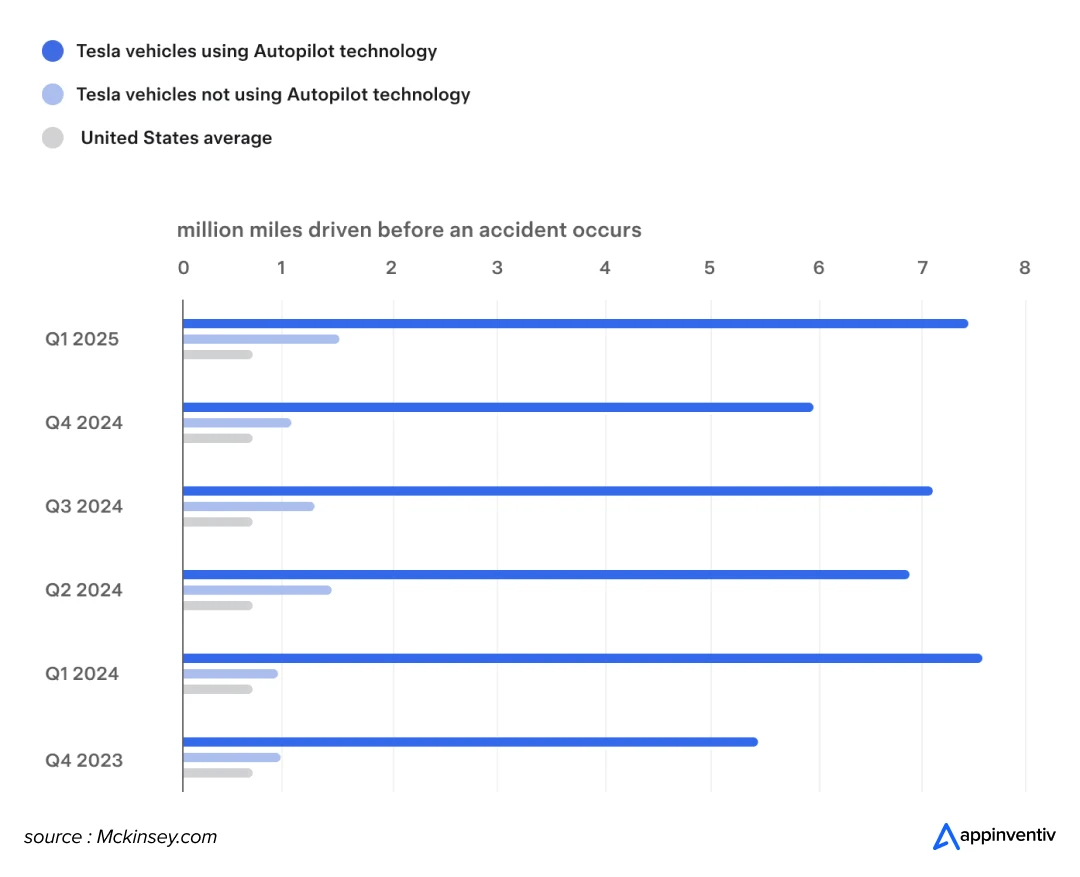
- Tesla’s Autopilot is leading the ADAS space mainly because of its huge data advantage. As of 2025, over 5 million Tesla vehicles on the road are equipped with Autopilot hardware. Together, they have driven more than 15 billion miles using Autopilot. This gives Tesla access to the industry’s largest real-world driving data collection. With this massive data pool, Tesla can improve its AI much faster than most competitors, making the system smarter, safer, and more reliable.
- According to a Statista report, in 2024, the global ADAS industry made around $58 billion in revenue. This market is expected to grow quickly and reach over $125 billion by 2029. The main reasons for this growth are rising demand for safer vehicles and the auto industry’s move toward self-driving technology.
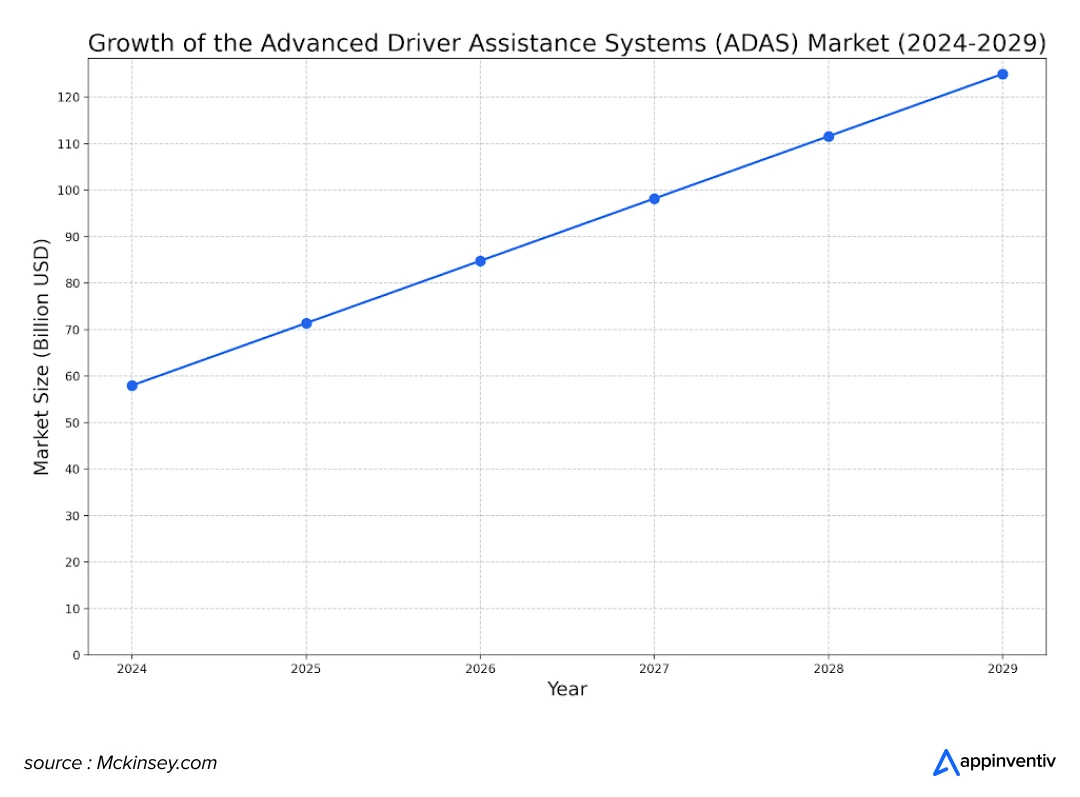
- McKinsey also estimates that advanced driver-assistance systems (ADAS) and autonomous driving (AD) technologies will generate $300 billion to $400 billion in revenue in the passenger car market alone by 2035.
The report suggests that 25% of consumers want to buy cars with advanced AD features. Even two-thirds are willing to pay up to $10,000 for hands-free highway driving, showing a strong willingness to invest in premium AI-driven driving experiences.
In addition, McKinsey estimates that by 2026, 37% of all new passenger vehicles will include advanced autonomous driving technologies, with 57% adoption in an accelerated growth scenario.
According to revenue-backed data, 20% of buyers prefer a subscription for ADAS features, and nearly 30% prefer to pay per use, opening new recurring revenue models for businesses building AD platforms.
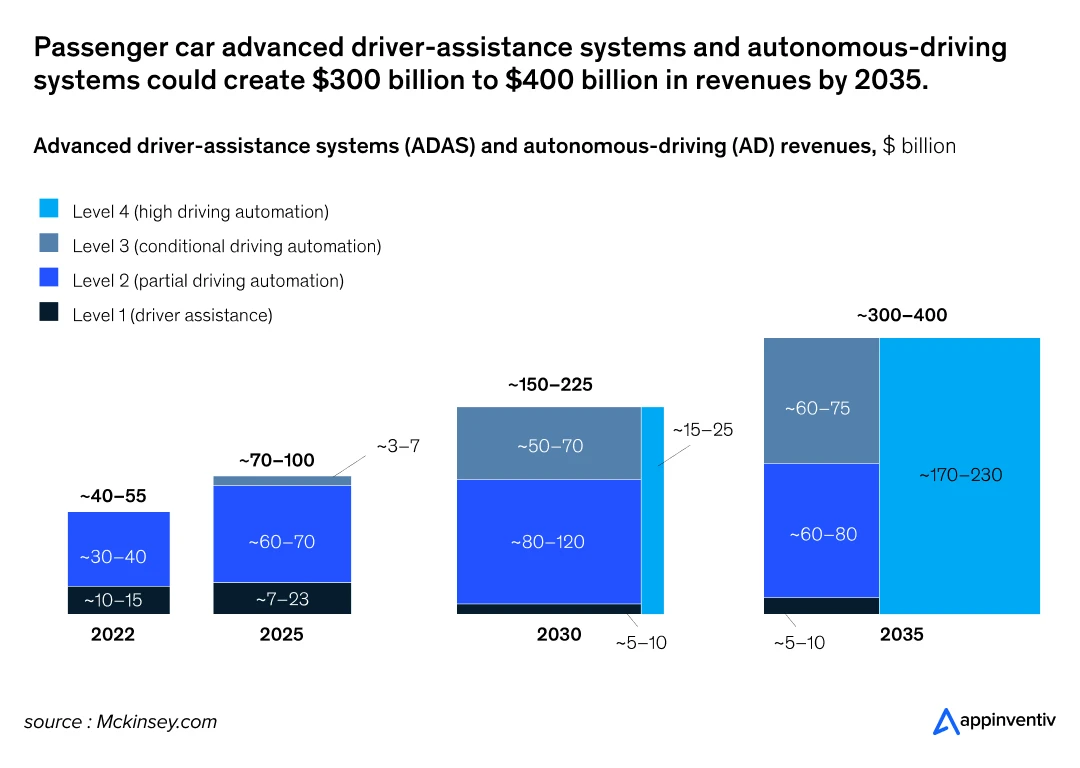
For companies and decision-makers in the automotive industry, investing in ADAS technologies like Tesla’s Autopilot is a smart move to stay in step with the market’s direction. Customers today expect safer, smarter, and more automated driving experiences, and ADAS features are quickly becoming a must-have rather than a luxury.
As the industry shifts toward full autonomy and tighter safety standards, businesses that adopt these technologies early will be better positioned to stand out, gain trust, and lead the market.
Understanding the Cost to Build a Driver Assistance System like Tesla Autopilot
Developing an ADAS like Tesla Autopilot involves a serious investment in time and technology. As revealed earlier, the cost to build an AI agent like Tesla Autopilot generally ranges between $40,000 and $300,000, depending on the level of automation, system architecture, and hardware-software integration required. The complexity can increase dramatically as businesses move from basic assistance features to full self-driving capabilities powered by AI and real-time data processing.
To estimate your potential investment, here’s a simple formula you can use:
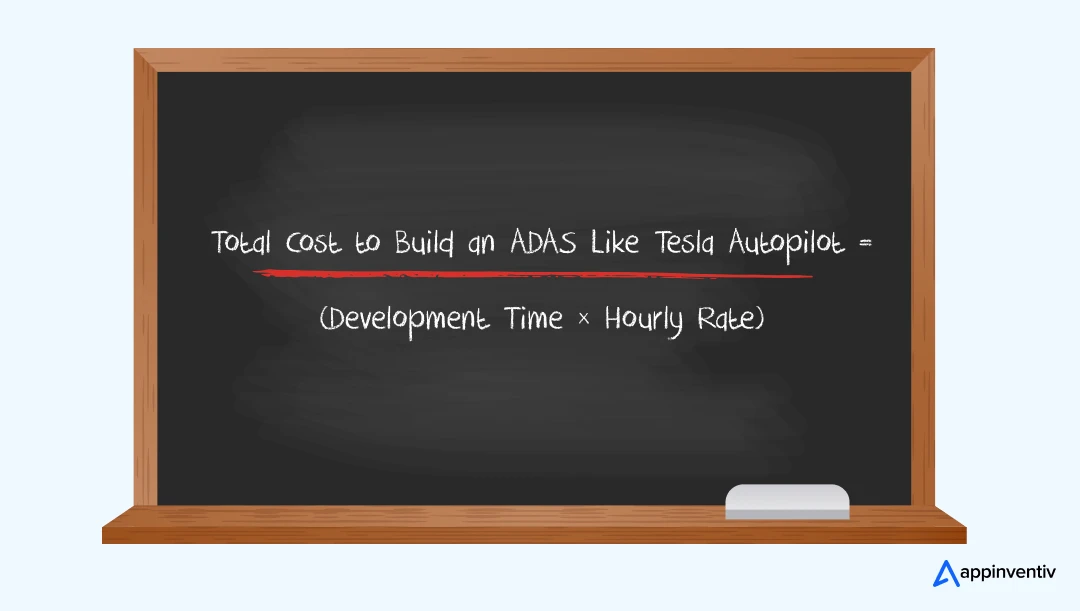
This formula helps estimate the costs based on the development time and the hourly rate of the developers involved.
Budgeting for Success: Cost Breakdown Across ADAS Development Stages
Let us look at the breakdown of typical timelines and cost to build a driver assistance system like Tesla Autopilot as per multiple development stages:
Research & Planning (2–4 weeks): $5,000 – $15,000
This covers early research, such as checking the market, studying competitors, and ensuring your product meets safety and legal standards.
Design & Structure (1–2 months): $10,000 – $25,000
Involves planning how the system will work, designing the app screens or dashboard, and setting up the data storage system.
Development (4–8 months): $50,000 – $200,000
This is the main build phase, where features like smart cameras, sensors, and decision-making tools are created and connected.
Testing (2–3 months): $20,000 – $50,000
Includes checking if the system works well in all driving situations using software tests and real-world trials.
Launch (1 month): $5,000 – $15,000
The final steps include connecting the system to the car and setting up tools to send software updates remotely.
Maintenance & Updates (Ongoing): $2,000 – $10,000 per month
Regular support to fix bugs, improve features, and update the AI to stay accurate and safe.
Key Factors Influencing the Cost to Build a Tesla Autopilot-Like ADAS System
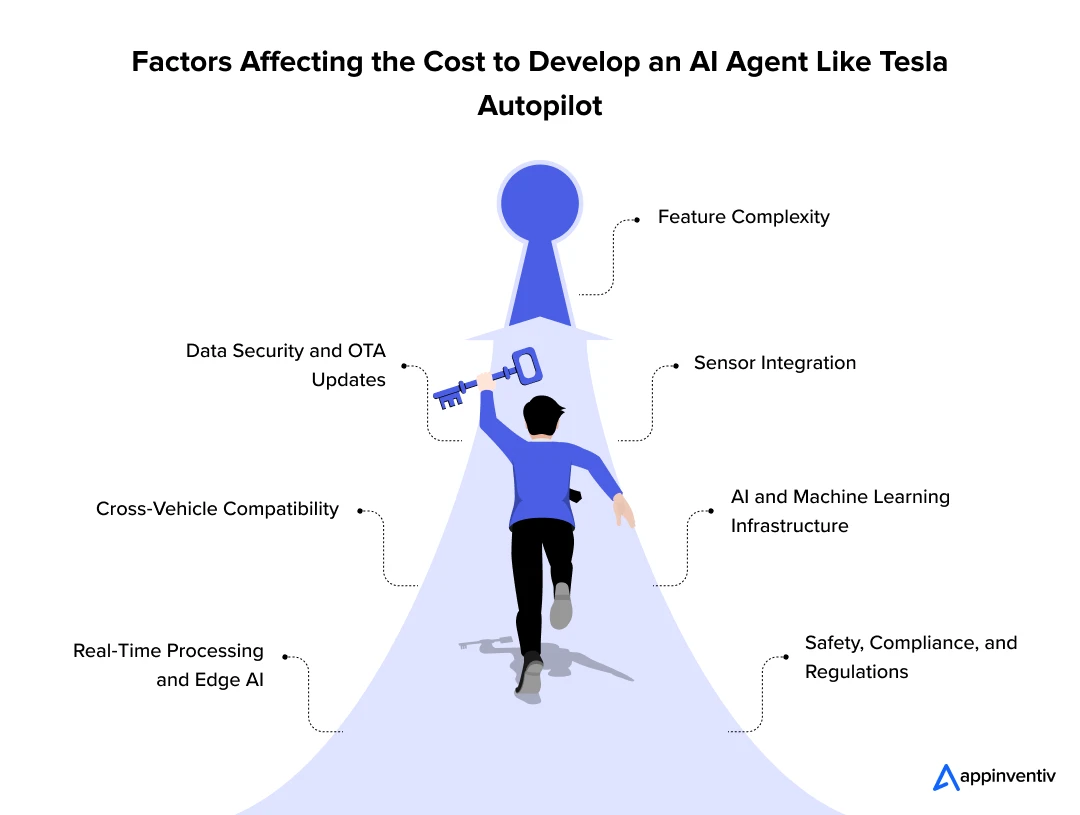 Creating a high-performance ADAS software requires businesses to align software intelligence with real-world driving environments. Here are the major factors that can affect the overall cost to build a driver assistance system like Tesla Autopilot:
Creating a high-performance ADAS software requires businesses to align software intelligence with real-world driving environments. Here are the major factors that can affect the overall cost to build a driver assistance system like Tesla Autopilot:
Feature Complexity
The more advanced the features, the higher the development cost. Basic functions like lane assist or emergency braking are quicker and cheaper to build. However, the system becomes more complex if you add intelligent features like adaptive cruise control, automatic lane changes, real-time object detection, or driver behavior prediction. This increases both the time needed to build it and the expertise required, raising the overall cost to build an AI agent like Tesla Autopilot.
| Complexity Level | Example Features | Estimated Timeframe for Development | Cost Estimation for AI Agent like Tesla Autopilot |
|---|---|---|---|
| Basic | Lane keeping, emergency braking | 3-6 months | $40,000 – $70,000 |
| Moderate | Smart cruise control, camera alerts | 6-9 months | $80,000 – $150,000 |
| Advanced | Predictive driving, AI-powered decisions | 9-12 months | $150,000 – $250,000 |
| Full-Scale | Navigation with cameras only, city driving | 12+ months | $200,000 – $300,000+ |
Sensor Integration
ADAS systems rely on multiple sensors, such as LiDAR, radar, ultrasonic sensors, and HD cameras, to understand the vehicle’s surroundings. Integrating these sensors so they work together smoothly can be technically challenging. The more types of sensors you use, the more time and effort go into setting them up, which directly pushes up the cost.
AI and Machine Learning Infrastructure
To function like Tesla Autopilot, your system will need powerful AI trained on a large amount of real driving data. Setting up the data pipeline, training the models, and regularly updating them is a resource-heavy process. This requires specialized talent and investment in high-performance computing and storage, making it one of the major factors affecting the cost to create an AI agent like Tesla Autopilot.
Bonus Read: AI in the Automotive Industry
Safety, Compliance, and Regulations
Your ADAS software must meet strict global safety standards. This means thorough testing, detailed documentation, and time-consuming approval processes. Also, compliance takes multiple rounds of validation and auditing, extending project timelines and increasing the overall cost to build an AI agent like Tesla Autopilot, especially if you target international markets.
| Compliance | Governing Body | Key Requirement |
|---|---|---|
| FMVSS (Federal Motor Vehicle Safety Standards) | NHTSA | ADAS must not compromise mandated vehicle safety functions |
| ISO 26262 Functional Safety | ISO (adopted by U.S. OEMs) | Follow a structured safety process for automotive electronics and software |
| SAE J3016 Automation Levels | SAE International | Clearly define driver vs. system roles for Levels 0–5 |
| NCAP 5‑Star Safety Program | NHTSA | Meet or exceed crash‑test and AEB/lane‑assist benchmarks |
| FCC Spectrum Rules | FCC | Use approved bands for radar, LiDAR, and V2X communication |
Real-Time Processing and Edge AI
For the system to make fast decisions, such as avoiding a collision, it must process data instantly inside the car, not wait for a cloud response. Building this edge AI setup requires highly optimized code. These real-time capabilities demand deeper engineering efforts, which ultimately raise the cost to make an AI agent like Tesla Autopilot.
Cross-Vehicle Compatibility
If your ADAS solution is meant for multiple vehicle types or brands, you must adapt it for different communication networks. This extra customization adds more time and testing rounds, increasing the cost to develop an agent like Tesla Autopilot and post-deployment support expenses.
Data Security and OTA Updates
Your ADAS platform should support over-the-air (OTA) updates and have strong cybersecurity to stay secure and scalable. Building these capabilities requires additional architecture, robust encryption technologies, and cloud infrastructure. This adds to the overall cost.
After looking into the factors that ultimately impact the cost to develop a driver assistance system like Tesla Autopilot, let us offer you a quick insight into how you can minimize these costs.
Proven Strategies to Minimize Development Costs for an ADAS Like Tesla Autopilot
Building an ADAS platform like Tesla’s Autopilot is a major investment, but that doesn’t mean costs can’t be optimized. With the right planning and development strategies, you can reduce unnecessary spending while building a safe, reliable, and scalable system.
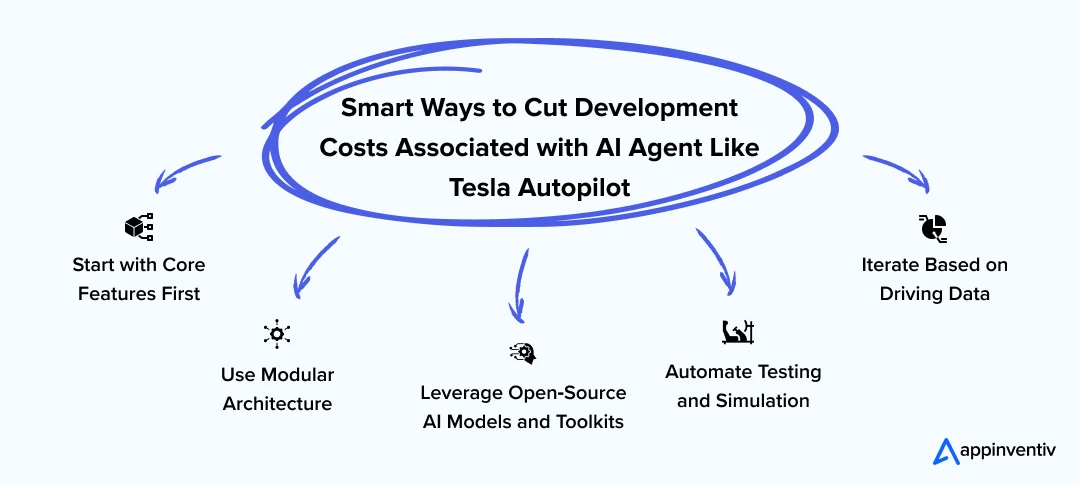 Start with Core Features First
Start with Core Features First
Begin with an AI-powered minimum viable product (MVP) that includes only essential driver assistance features like lane keeping, adaptive cruise control, and basic alerts. This allows you to launch faster, gather real-world data, and improve the system over time based on actual needs. Ultimately, the overall cost to build an AI agent like Tesla Autopilot stays manageable because you invest in the essentials first and add advanced features only when your data proves they will deliver clear value and returns.
Use Modular Architecture
Build your ADAS system in modules so individual features like traffic sign detection or automatic lane change can be developed and tested separately. This reduces rework, allows easier upgrades, and helps manage the overall development cost to build an AI agent like Tesla Autopilot phase by phase.
Leverage Open-Source AI Models and Toolkits
Many pre-built intelligent AI models and open-source frameworks exist for image recognition, edge computing, and sensor calibration. Using these instead of building from scratch can save time and engineering effort without compromising quality. Thus, helping businesses like yours to reduce the overall cost to build a driver assistance system like Tesla Autopilot.
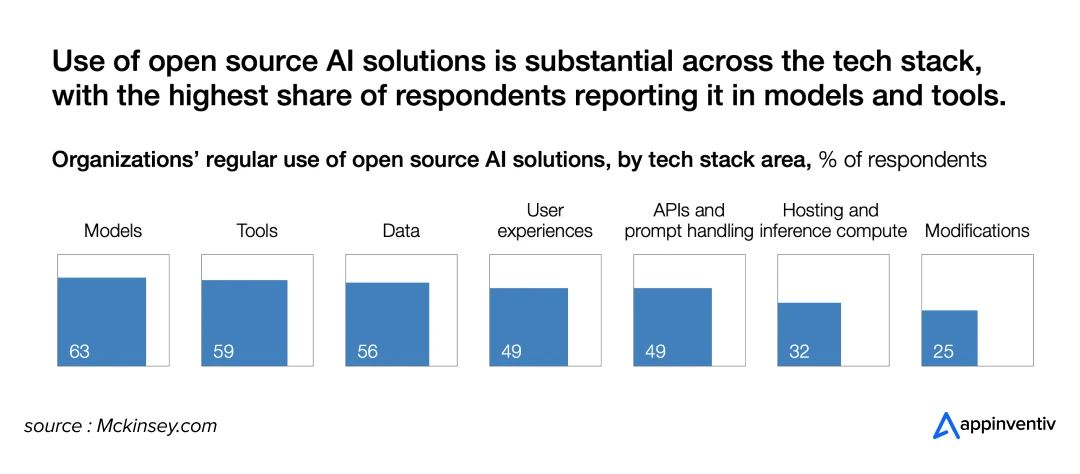
According to a McKinsey report, open‑source AI has moved from a niche choice to a mainstream pillar of enterprise tech stacks. In a survey of more than 400 AI decision‑makers, 60% say they now deploy at least one open‑source model in production. The major reasons for adoption include faster time‑to‑value, lower total cost of ownership, and easier customization.
Automate Testing and Simulation
ADAS testing is time-consuming and expensive. Using automated simulation tools and virtual driving environments can dramatically reduce the cost of in-field testing, catch bugs earlier, and improve safety without constant physical trials.
Iterate Based on Driving Data
Once the system is on the road, it collects driving data continuously and improves features based on real-world insights. This avoids wasting time and resources on features users don’t need or that don’t perform well in actual driving conditions, reducing the overall cost to build an AI agent like Tesla Autopilot.
After looking into the factors that can impact the cost to develop a driver assistance system like Tesla Autopilot, and the strategies to optimize it, let us move ahead and look into the core features necessary to be integrated in an AI agent similar to Tesla Autopilot.
Get a no-BS cost breakdown to build an AI-powered ADAS that leaves rivals in the dust.
Essential Features of an AI Agent Like Tesla Autopilot
To develop an agent like Tesla Autopilot, it’s important to focus on the core features that ensure driver safety, enhance vehicle performance, and deliver a smooth user experience. Below are the essential features of an AI agent like Tesla Autopilot that businesses must consider:
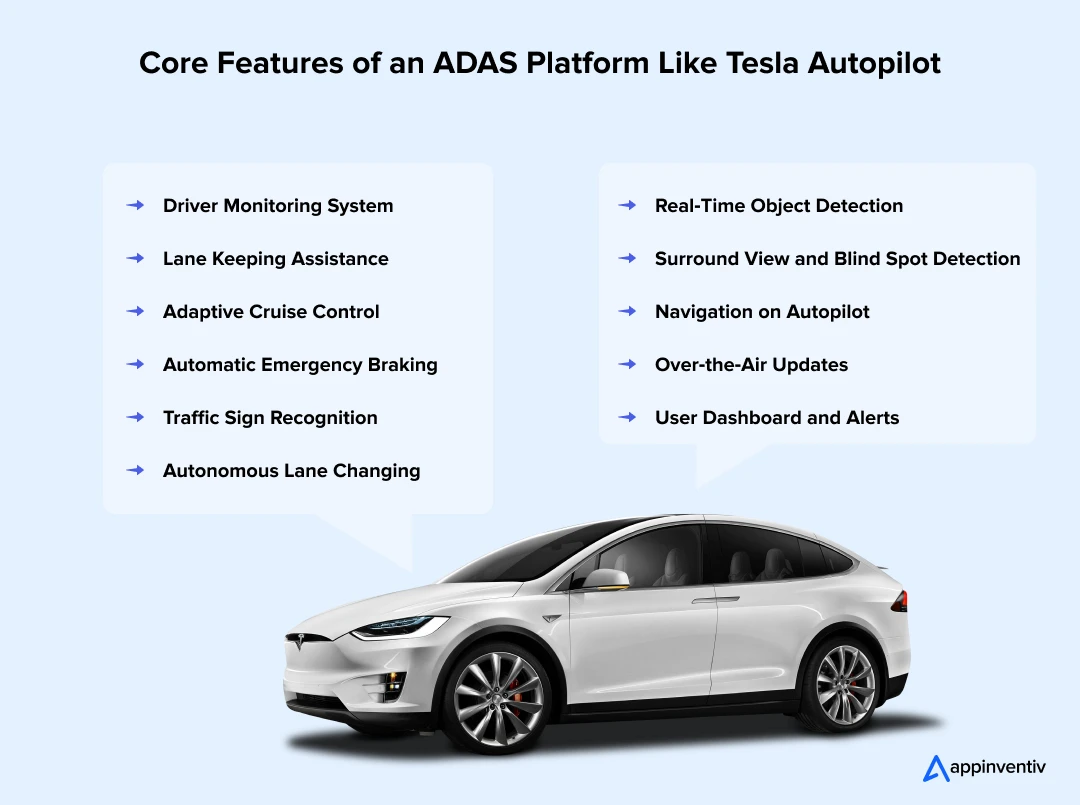
- Driver Monitoring System: This system tracks the driver’s attention using cameras and sensors to ensure they remain alert and ready to take control when needed.
- Lane Keeping Assistance: Helps keep the vehicle centered in its lane by automatically adjusting the steering if the car drifts without signaling.
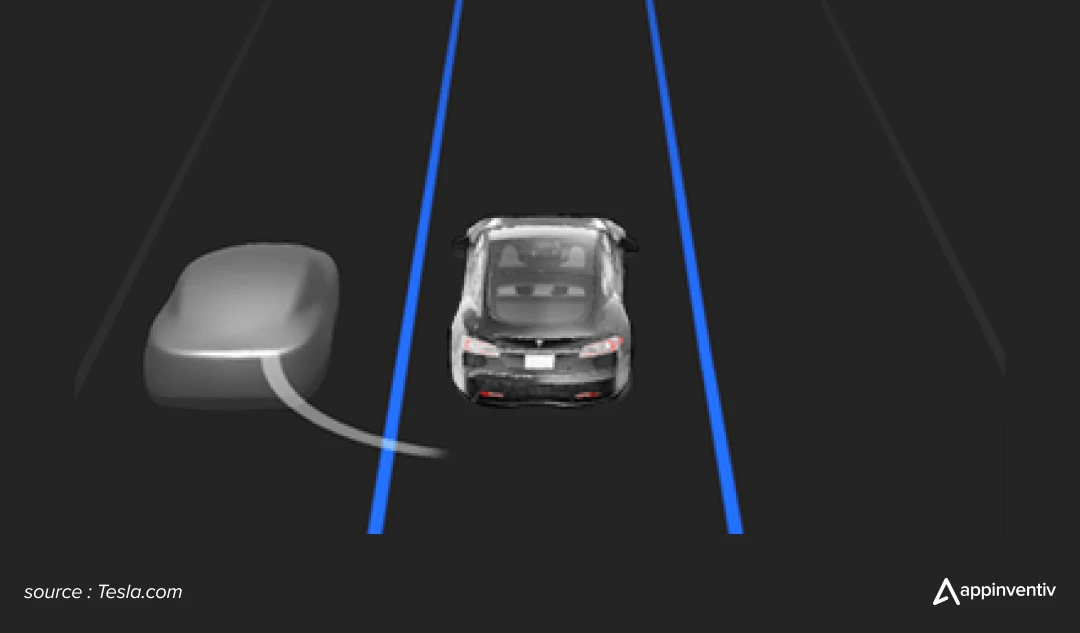
- Adaptive Cruise Control: Maintains a safe distance from the vehicle ahead by automatically adjusting the car’s speed based on traffic flow.
- Automatic Emergency Braking (AEB): Detects sudden obstacles or vehicles ahead and applies brakes if the driver doesn’t react in time, reducing the risk of collisions.
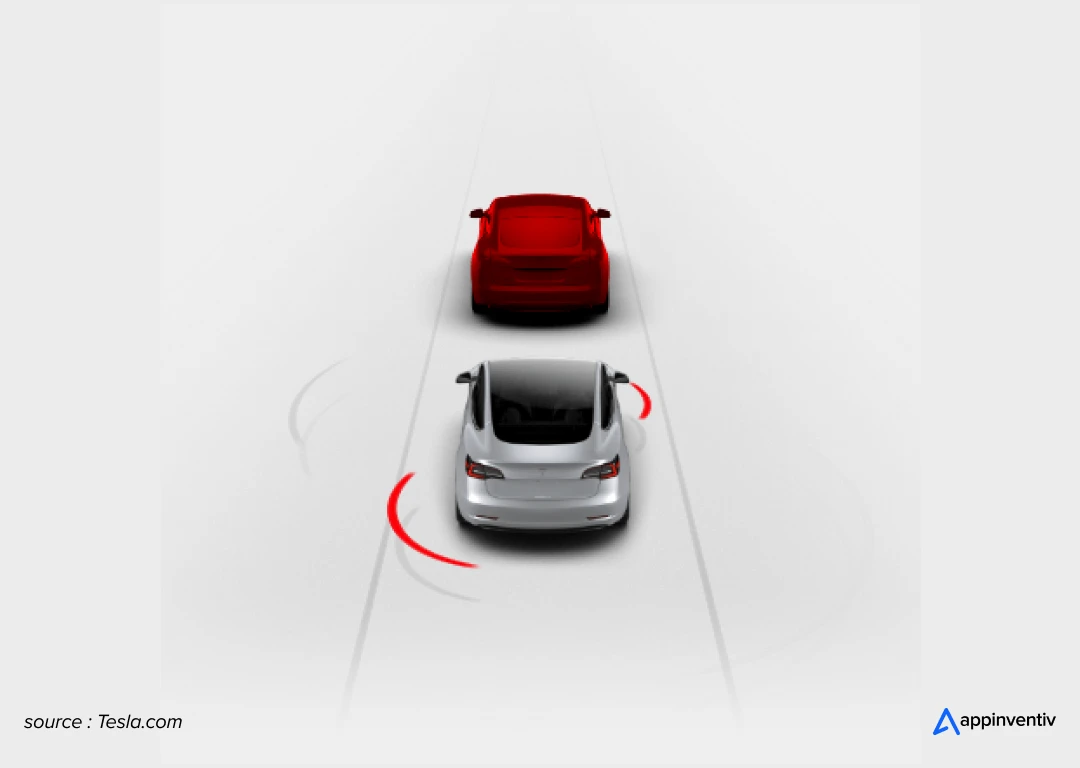
- Traffic Sign Recognition: It uses onboard cameras and AI to read and display important road signs, such as speed limits, stop signs, and school zones.
- Autonomous Lane Changing: This technology enables vehicles to change highway lanes without manual input, using sensors and data from nearby traffic.
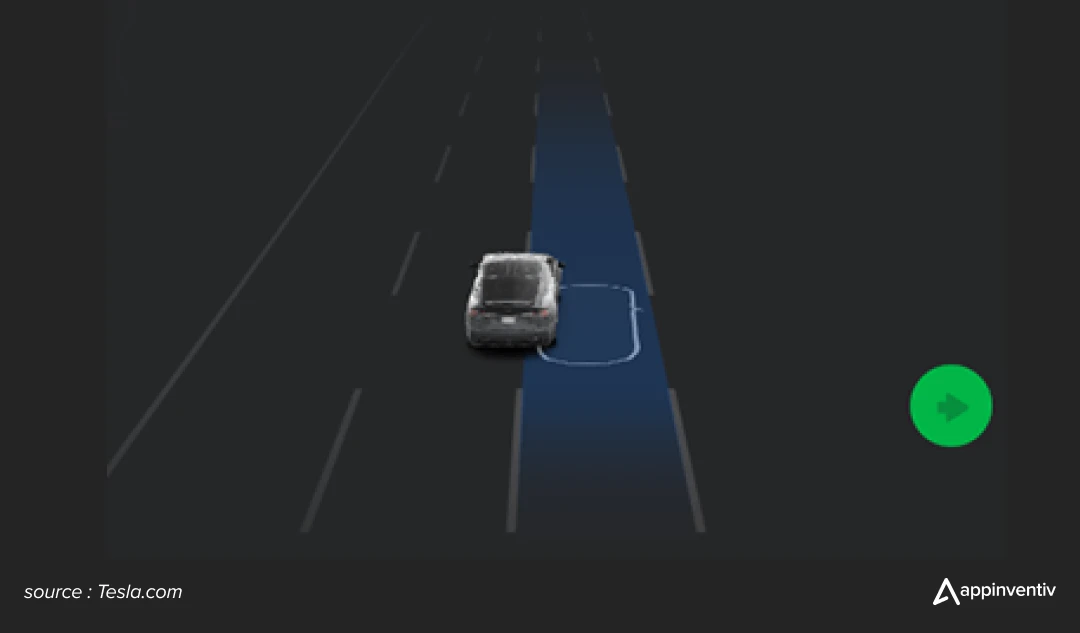
- Real-Time Object Detection: Identifies nearby vehicles, pedestrians, and obstacles using AI-powered vision systems, helping the car respond instantly.
- Surround View and Blind Spot Detection: This feature offers a 360-degree view around the car and alerts drivers when another vehicle enters their blind spot, improving overall safety.
- Navigation on Autopilot: Assists the vehicle in planning and following the best route, including highway entries and exits, with minimal driver input.
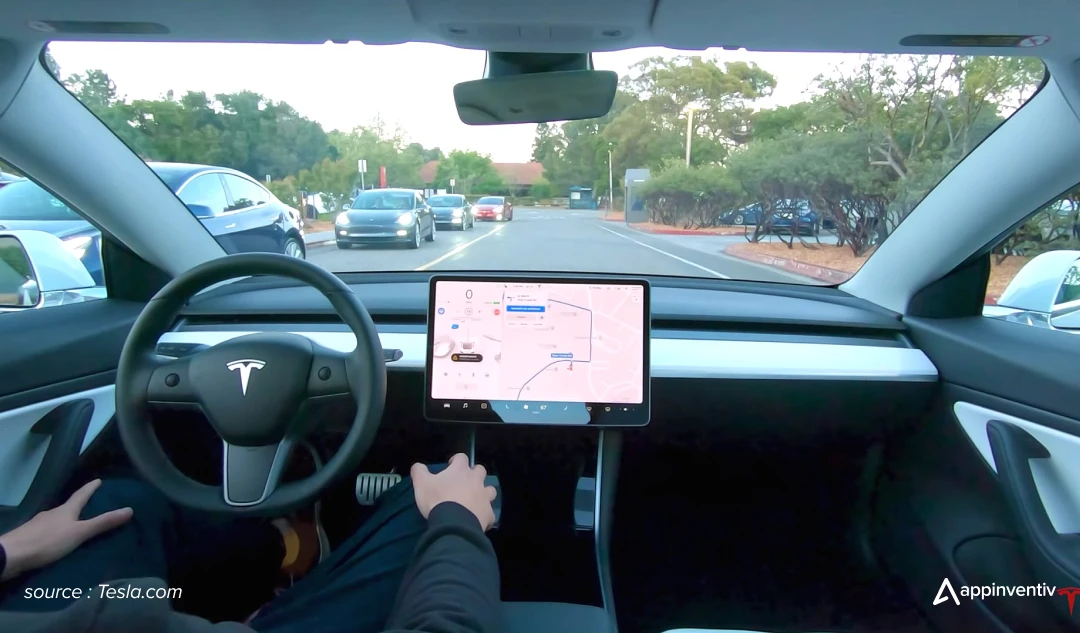
- Over-the-Air (OTA) Updates: Allows the system to receive software improvements and bug fixes remotely, ensuring it stays up to date without requiring service visits.
- User Dashboard and Alerts: This feature displays system status, warnings, and suggestions through a user-friendly interface that drivers can easily understand and respond to.
Elevating the ADAS Experience with Advanced Features
Basic driver assistance is not enough to stand out in the fast-growing ADAS market. Incorporating advanced features into your system can greatly enhance safety, user trust, and long-term value. These next-level capabilities will also help you create a competitive edge.
However, it’s important to note that integrating these features can increase the cost to build a driver assistance system like Tesla Autopilot due to their complexity.
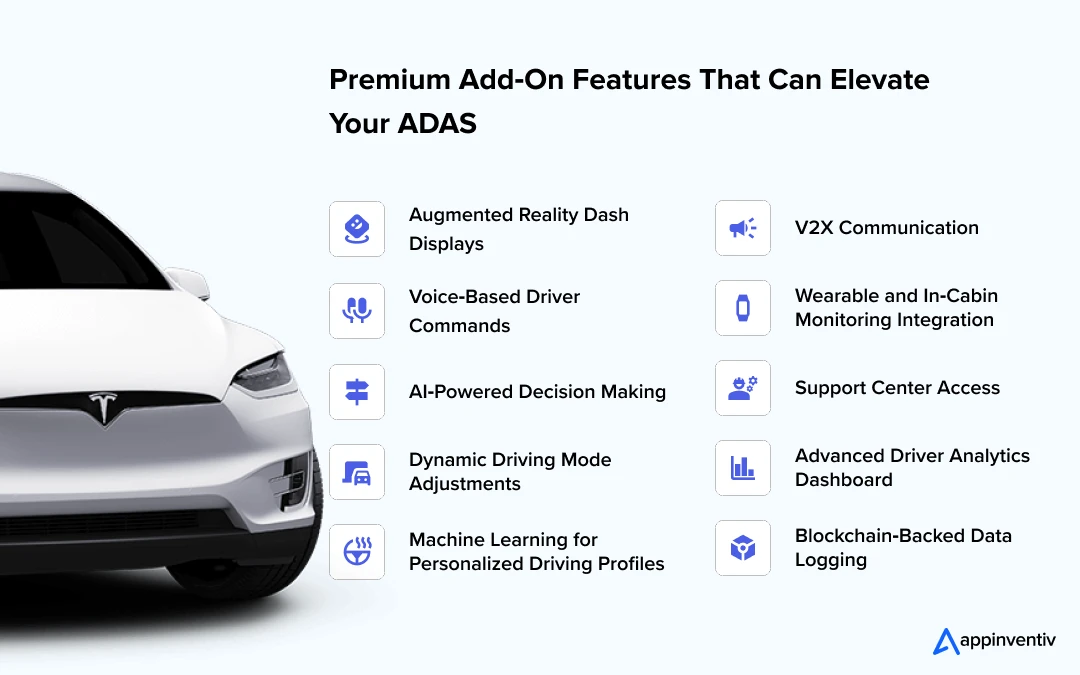
- Augmented Reality Dash Displays: Add AR elements to the driver’s display, showing lane guidance, hazard alerts, and navigation overlays directly on the windshield or dashboard to reduce distraction and improve clarity.
- Voice-Based Driver Commands: Drivers can control key ADAS functions using voice commands for hands-free convenience, such as activating cruise control or requesting a lane change.
- AI-Powered Decision Making: Use artificial intelligence in business intelligence to process real-time driving data and make smart decisions on speed, lane positioning, and obstacle avoidance.
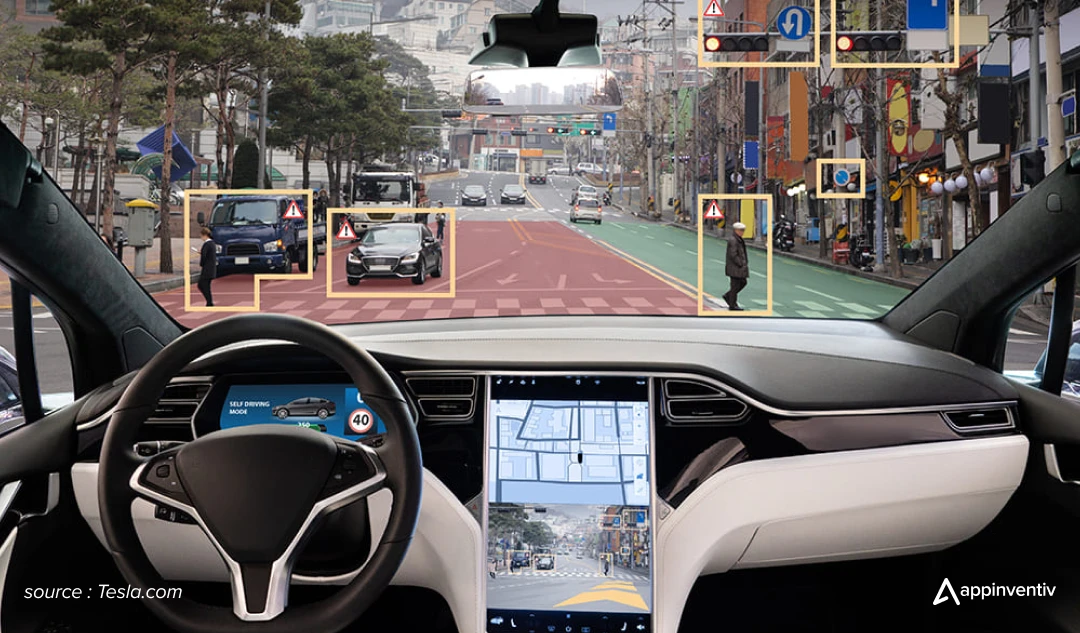
- Dynamic Driving Mode Adjustments: This option allows the system to automatically adapt driving behavior based on road conditions, weather, traffic patterns, or the driver’s past preferences.
- Machine Learning for Personalized Driving Profiles: This feature trains the software using each driver’s habits, such as preferred speeds or following distance, to deliver a smoother, customized experience over time.
- V2X (Vehicle-to-Everything) Communication: Automotive semiconductors integrate the ability to communicate with other vehicles, traffic signals, and infrastructure to predict and respond to potential hazards before they appear.
- Wearable and In-Cabin Monitoring Integration: Wearables’ endless impact on different industries has revolutionized the way we communicate with our devices. For example, in the automotive industry, you can connect your cars with smartwatches to detect driver fatigue, distraction, or stress and alert or intervene when needed.
- Advanced Driver Analytics Dashboard: Provide a real-time dashboard that helps drivers track their driving habits, safety score, and ADAS usage history for transparency and improvement.
- Blockchain-Backed Data Logging: Use blockchain technology to log trip data securely, offering a tamper-proof record of ADAS actions. This is useful for insurance, audits, or regulatory purposes.
After looking into the features and development cost of an AI agent like Tesla Autopilot, let us move ahead and look into its development stages.
Developing an ADAS System Like Tesla Autopilot: A Step-by-Step Guide
The process of developing an AI agent like Tesla Autopilot requires a well-structured approach. Below is a step-by-step guide to help you understand how to develop an agent like Tesla Autopilot effectively.
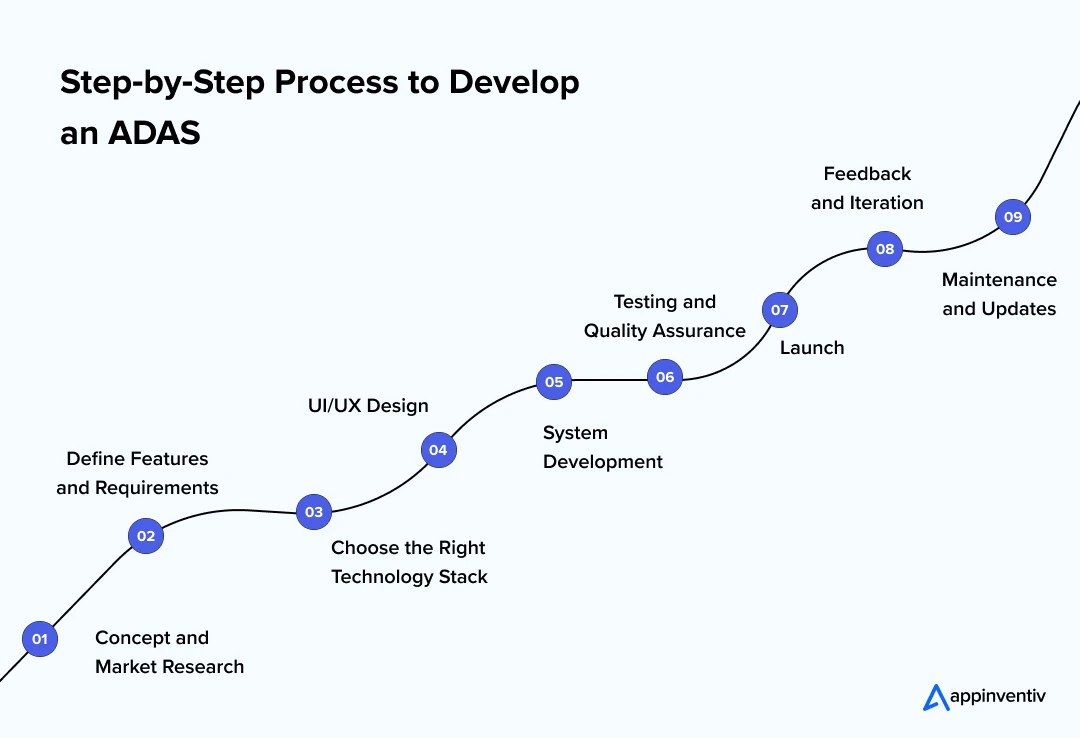 Concept and Market Research
Concept and Market Research
Start by defining what ADAS system you want to build, like basic assistance or full self-driving. Then study the market, users, competitors, and legal rules to understand what your system must deliver.
Define Features and Requirements
List your system’s essential features, like lane keeping, braking, or cruise control. Use research insights to decide what technical tools and sensors are needed to support these functions.
Choose the Right Technology Stack
Select software that can process data quickly, work with your sensors, and stay stable. Also, ensure the tech supports cloud access, updates, and future upgrades without extra cost.
UI/UX Design
Design a simple, distraction-free interface showing alerts, system status, and driving visuals. The goal is to help the driver stay informed and safe without overwhelming them with too much data.
System Development
Begin coding and building each feature step by step, first with core safety systems. Once each part is tested, combine them into a full working system ready for real-world testing.
Testing and Quality Assurance
Run your system in simulations and under road conditions to check for bugs or failures. Make sure it meets safety standards and handles tough driving situations correctly. AI in quality assurance can directly impact the overall cost to build a driver assistance system like Tesla Autopilot.
Launch
Deploy the ADAS system in a limited area or with select vehicles for a safe and controlled launch. Prepare support channels and user guides so drivers can use the system confidently.
Feedback and Iteration
Gather feedback from drivers and analyze system performance using real-world data. Use this input to improve accuracy, fix issues, and make the experience smoother over time.
Maintenance and Updates
Keep your system updated with new features, security patches, and performance boosts. Use over-the-air (OTA) updates to deliver changes without needing service visits.
After looking at how to build a driver assistance system like Tesla Autopilot, let’s move on to understanding the revenue strategies that can get businesses the maximum ROI.
How Does an AI Agent Like Tesla Autopilot Make Money?
An AI agent similar to Tesla Autopilot is a powerful business model. For companies investing in ADAS development, the ability to turn this system into a recurring and scalable revenue stream is one of the biggest reasons to build it. When done right, it can continue generating income long after the initial sale of the vehicle or service.
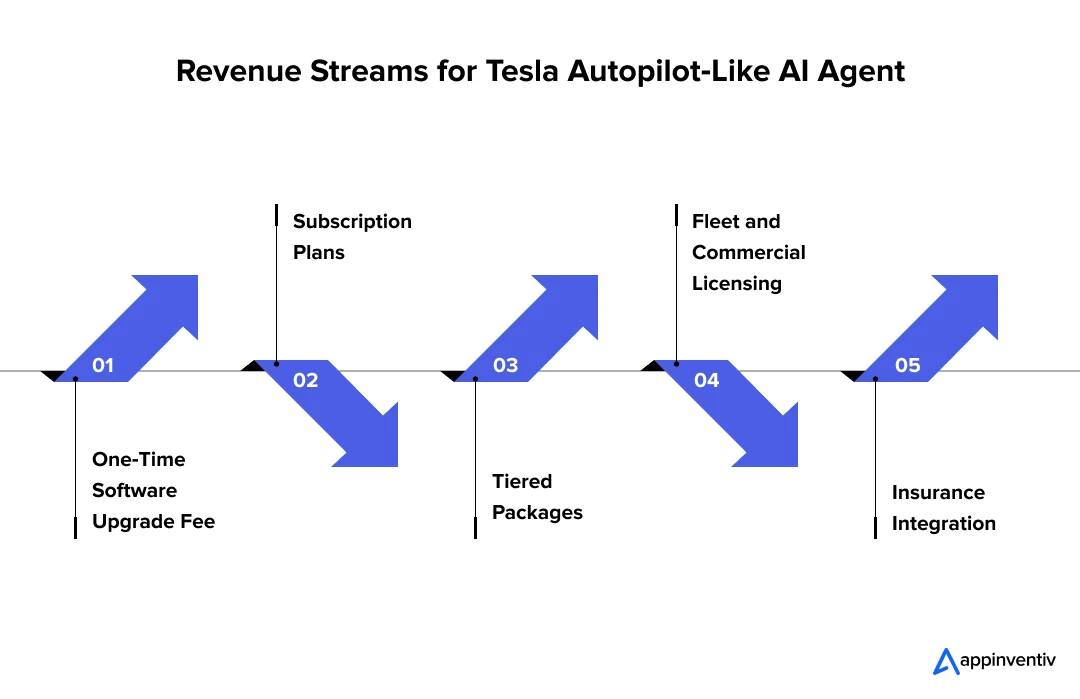 One-Time Software Upgrade Fee
One-Time Software Upgrade Fee
You can charge customers a fixed fee to unlock advanced features like full self-driving or auto lane change. This upgrade becomes a high-margin product after the system is developed.
Subscription Plans
Offer ADAS access as a monthly or annual subscription instead of a one-time payment. This model creates consistent cash flow, especially for customers who want flexibility without paying upfront.
Tiered Packages
Create multiple versions of your system, such as basic, advanced, and premium, so that users can pay more for more features. This encourages upgrades over time and appeals to different customer budgets.
Fleet and Commercial Licensing
Your ADAS platform can be licensed to ride-hailing companies, delivery fleets, or other automotive brands. These B2B deals can generate large contract revenue.
Insurance Integration
You can partner with insurance companies by proving that your system improves road safety. Users benefit from lower premiums, and your business gains revenue through affiliate models.
Let’s build a real‑time AI agent with edge‑grade safety that keeps your brand ahead of the pack.
Why Appinventiv is the Right Choice for Building Your ADAS System
We hope this blog has helped you understand the complexity and the cost to build a driver assistance system like Tesla Autopilot. Now that you are ready to take the next step, choosing the right development partner is the most important decision.
At Appinventiv, we understand that building an ADAS platform is not just about writing code. It’s about bringing safety, intelligence, and real-world performance together in one product. That’s exactly what we specialize in.
Our team has strong experience in artificial intelligence, machine learning, and edge computing. We understand how to design systems that process real-time data, work with high-precision inputs, and make smart decisions instantly. These are the building blocks of any successful driver assistance platform.
As a leading AI services company, we take a product-first approach. That means we start by understanding your goals, vehicle architecture, and user needs. Based on that, we design and build the platform from the ground up to ensure it works reliably in real driving conditions. Every feature is developed to perform under pressure and scale as your product grows.
Appinventiv also has a strong foundation in safety-focused development. We follow structured processes prioritizing testing, quality checks, and performance validation at every stage. Our experts will ensure that your product is ready for the road.
Most importantly, we work like partners, not just a tech team. We stay involved beyond launch to support updates, improve features, and ensure the system continues to deliver value over time. Our goal is not just to build what you ask for but to help you build what the market will remember.
If you are looking to create an AI agent like Tesla Autopilot, we are ready to help you do so.
FAQs
Q. How much does it cost to develop an AI agent like Tesla Autopilot?
A. The overall cost to build a driver assistance system like Tesla Autopilot usually ranges between $40,000 and $300,000 or more. The final cost depends on the complexity of features, the number of sensors, the use of AI and machine learning, and the level of real-time processing required. Basic systems with limited functionality can cost less, while full-scale solutions with advanced autonomy, edge AI, and safety layers will be at the higher end of the range.
Q. How long does it take to build a driver assistance system like Tesla Autopilot?
A. Building a driver assistance system like Tesla Autopilot usually takes 6 to 12 months or more, depending on its complexity. The time includes planning, developing features, training the AI, connecting sensors, testing for safety, and getting ready for launch. If the system uses deep learning or advanced decision-making, the overall time to create an AI agent like Tesla Autopilot would be longer, as businesses would have to work extra on data, testing, and meeting safety rules.
Q. What are the key factors that influence the cost of building Tesla Autopilot-like ADAS?
A. The cost to build a Tesla Autopilot-like ADAS is shaped by the complexity of features, quality and integration of sensors, AI infrastructure, software development, testing and compliance requirements, security considerations, platform adaptability, and ongoing maintenance needs. Each of these factors must be carefully evaluated to estimate the total investment for such an advanced automotive system.
Q. What business value and ROI can we expect from investing in an AI-powered driver assistance system?
A. Investing in ADAS not only reduces accident risk and liability but also enhances brand reputation, enables new revenue streams (subscriptions, upgrades), and positions your company as a technology leader. Many OEMs report increased customer retention and willingness to pay for advanced features, with recurring revenue models now possible through software-enabled upgrades.
Q. What are the benefits to build an AI agent for Tesla Autopilot?
A. Creating an AI-powered ADAS platform offers strong long-term value for automotive businesses.
Here are a few key benefits businesses must know about:
- Improves road safety by reducing human error
- Builds brand trust through advanced safety features
- Opens doors to future-ready products and autonomous tech
- Enables data collection for continuous improvement
- Supports new revenue models like subscriptions and upgrades
- Gives a competitive edge in a fast-moving mobility market


- In just 2 mins you will get a response
- Your idea is 100% protected by our Non Disclosure Agreement.

How Much Does It Cost to Build an AI App in Dubai?
Key takeaways: AI app costs in Dubai typically range from AED 80,000 for simple builds to AED 800,000+ for enterprise systems. Dubai is past AI experimentation, and not investing now means catching up later at higher cost. The real budget is driven by data, integrations, architecture, and compliance, not just app features. Hidden costs like…
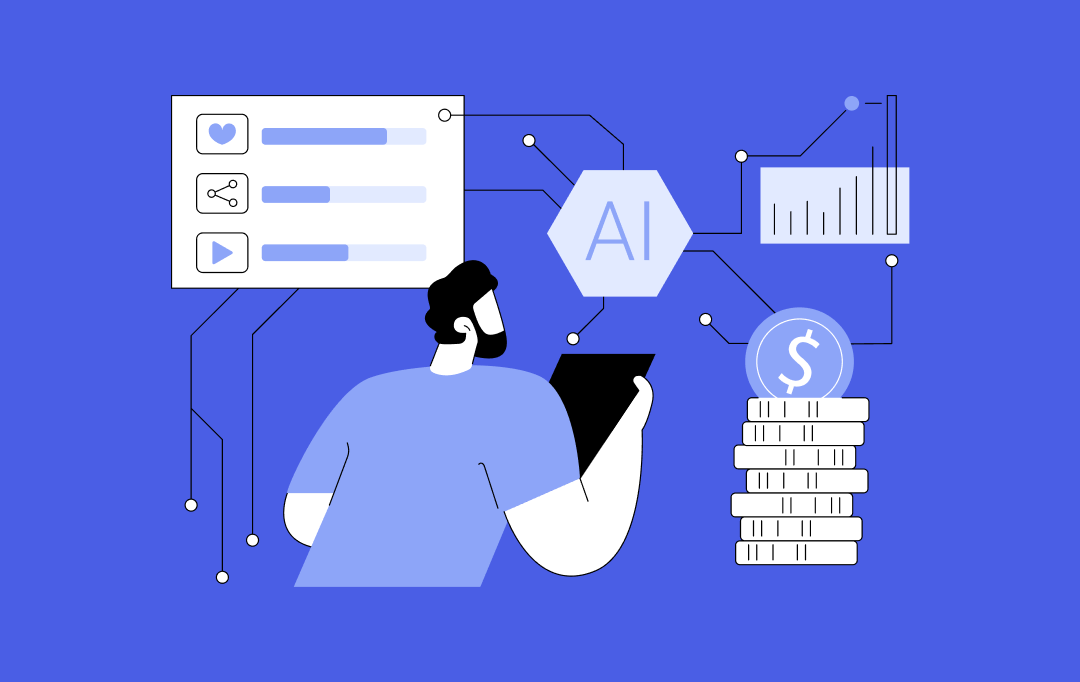
How AI Tokenization is Enabling Secure and Transparent Asset Ownership in 2026
By 2026, AI tokenization has moved beyond early-stage experiments and pilot projects. Tokenizing real-world assets has become a serious commercial strategy for financial institutions, supply chain operators and technology-driven enterprises. A 2025 report by the World Economic Forum in collaboration with Accenture highlights tokenization as a key mechanism for value exchange in modern financial markets.…

13 Ways Generative AI is Transforming the Hospitality Industry
Key takeaways: The most mature applications of Generative AI for hospitality are in guest service, revenue management, marketing, and operations automation. Real value comes from integrating generative AI into hospitality operations and existing PMS, CRS, CRM, and POS systems, rather than using stand-alone tools. Successful programs treat Generative AI in hospitality as a product, incorporating…
